to Drive
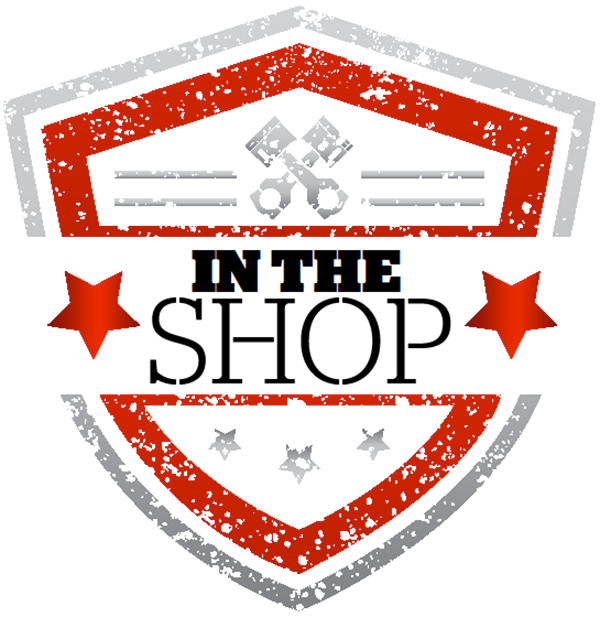
 Photography By Tim Sutton
Photography By Tim Sutton
e are going to wrap up where we left off last month on how the Art Morrison Enterprises (AME) GT Sport chassis fits beneath a 1959-1964 Chevy B-body. Our project continues while at Scott Bonowski’s Hot Rods & Hobbies (HR&H) shop located in Signal Hill, California. We will hit some of the high points but the reality is nothing replaces reading the full instruction booklet from AME … so don’t cheat!
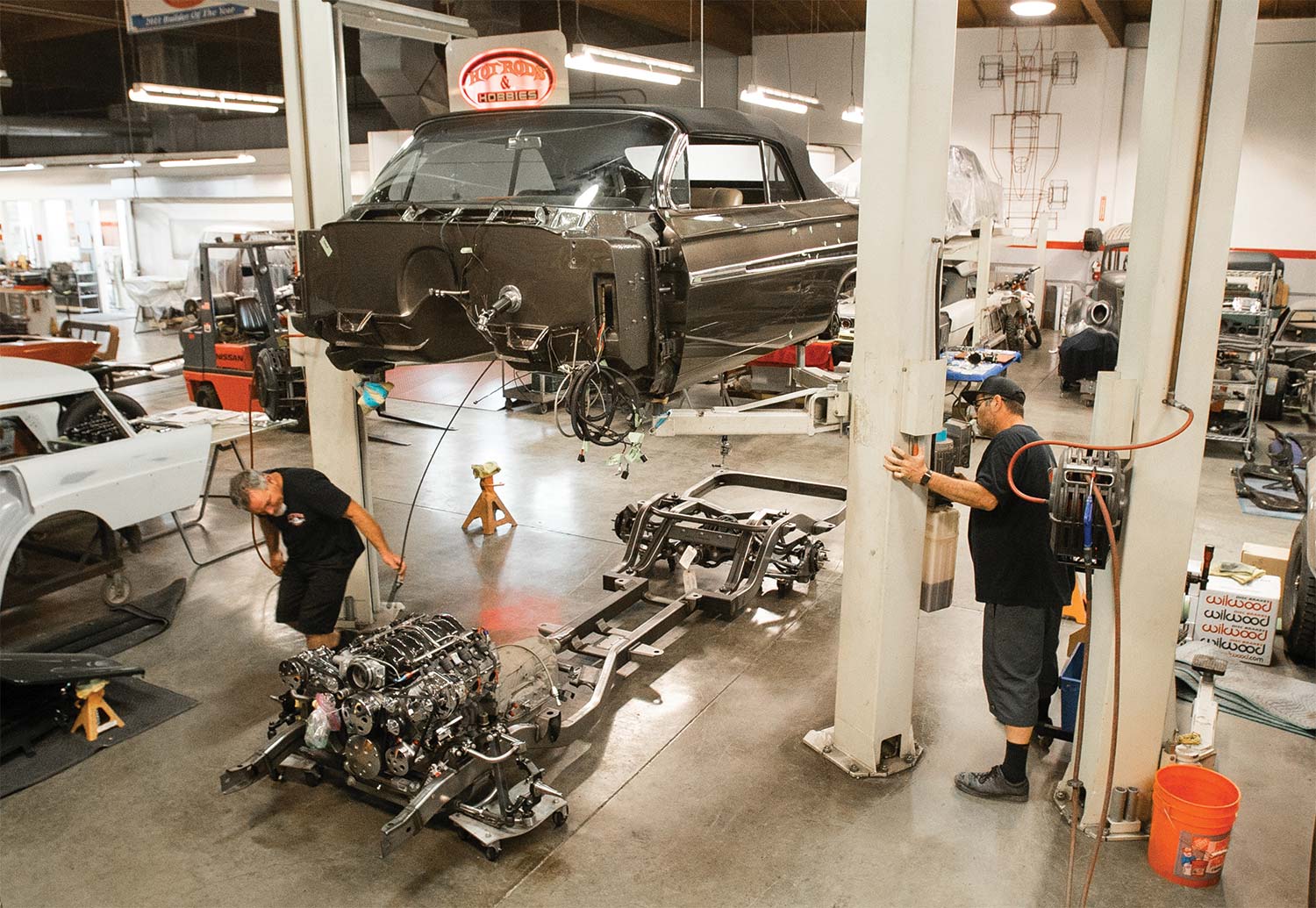
That brings us to why we drop old bodies onto new chassis. We have installed so many of the other amenities it just makes sense to tackle the one significant thing that will change the entire demeanor of an early car. It takes something old and makes it both compatible and on par in today’s modern world of performance.
We’ve progressed to lowering our 1961 Chevy Impala convertible onto the chassis to secure all of the body mount points and make what sheetmetal mods are required. In our world of hot rodding we have come to understand there’s both a need and a desire to have a modern chassis under our many decades-old rides.
AME shipped the GT Sport chassis directly to HR&H and once uncrated it was virtually ready to go. Both the IFS and the Multilink IRS were bolted into position. Such items as the coilover shocks, brakes, and dropping in our powertrain were about all that was needed to finish out the chassis. The trick to the swap is to make sure that the necessary modifications are made to our 1959-1964 Chevy underbody sheetmetal before buttoning up the chassis swap.
According to AME, “The 1959-1960 models use the 1959 Impala hardtop mounts and the 1961-1964 models use the 1961-1964 convertible mounts. However, the Impala GT Sport chassis includes two additional body mounts (per side) that were designed for added body stiffness.”
Since our car had a fuel cell at one time added by a previous owner, it was back to square one. If your body is stock then the 1961-1964 gas tank is located directly behind the rear axle housing. However, remember our 1961 convertible is using the IRS (Multilink). The stock gas tank will not fit with the Air Spring Triangulated 4-Bar Suspension or the Multilink IRS, and that’s what we needed to address. All 1959-1964 GT Sport chassis will require minor body modifications for fitment. The goal is to make the sheetmetal mods but end up with what would seemingly appear to have a factory appearance.
From the bottom of the footwell, the approximate height of the trim is 4 inches. The base of the framerails will sit nearly flush with the base of the footwell. Mark the height of the approximate trim from the footwell base. Then use a level or a laser to scribe a line across the footwell level to the rocker of the car. Since the car is level with the ground, measurements can be taken from the ground to ensure the trim line is level to the rocker of the car. Again, apply tape along the trim line until your upper and lower tape lines intersect. This is your initial trim section. When trimming, make sure to leave approximately 1/4 inch per side of the trim line to leave a slight clearance for the framerails sit in. Use a cut-off wheel or plasma cutter to cut out the trim section.
Something else that bears checking is the top of the engine to hood clearance. In Bonowski’s case (you will see this in a photo) the body is mounted to the frame, the core support/radiator is in position, and the hood is on. You can look and measure from the side to see how much space you have from the top of the engine to the bottom of the hood. This is critical in HR&H’s case as a Whipple supercharger will top off this LS motor.
Another area to pay particular attention to is wheel and tire clearance. Especially in the front for turning clearance and in back for wheel/tire removal. In any situation make sure to work with AME with the wheel/tire combination and sizing you wish to use. You can save yourself a great deal of grief by first making sure AME can accommodate your wishes.
As was mentioned last month the body styles on the 1959-1960 cars have more room because of the fender bulge while the 1961-1964s have a narrower bulge, thereby giving you less room. According to AME, the maximum tire width to fit in the factory rear tubs is 305 mm for 1959-1960 cars. For the 1961-1964 cars you’ll need a 295mm tire to fit within the factory front wheeltubs.
Now, HR&H was able to get away with 295/35ZR/20s in back and they say they have just enough room to drop the wheel/tire by disconnecting the lower shock mount and the wheel/tire will come out. The fronts are 235/40ZR19. We have seen a car on a lift with the wheel/tire hanging freely, then the lower shock mount point is undone and the sway bar mount is removed.
There’s more to be considered but the AME instructions are well detailed and have illustrations to help you each step of the way. Bottom line … read the instructions and be patient. Also, make sure you have worked with AME on wheel and tire combinations, one- or two-piece driveshaft, and, remember, that the triangulated four-bar or the Multilink IRS cannot be used with a stock gas tank without some modifications to the tank flange area.
For modern ride comfort and handling, dropping a GT Sport chassis underneath your 1959-1964 Chevy B-body is just the right touch.
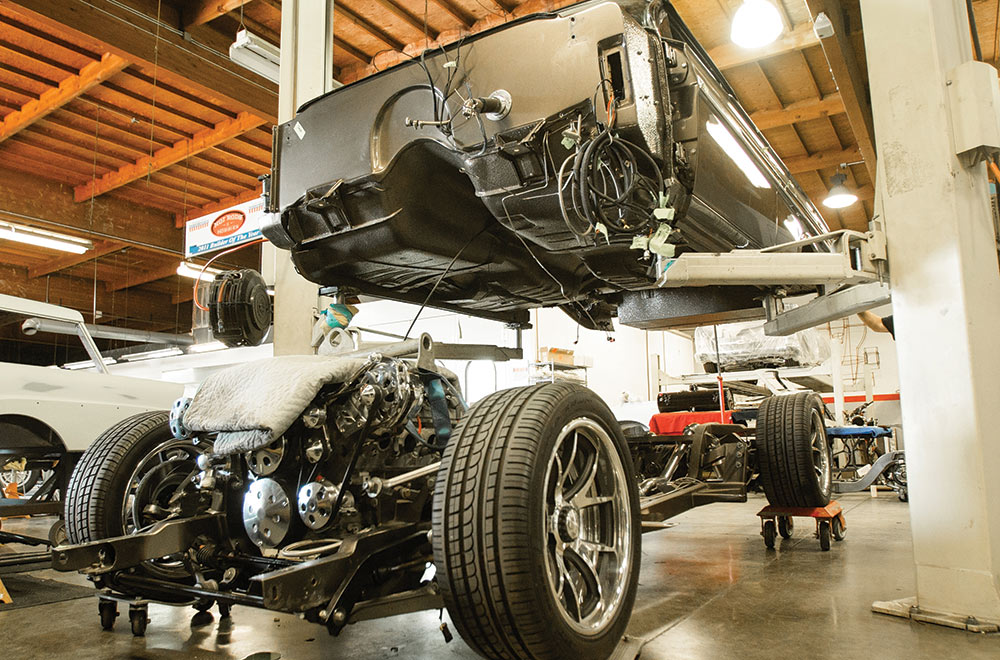
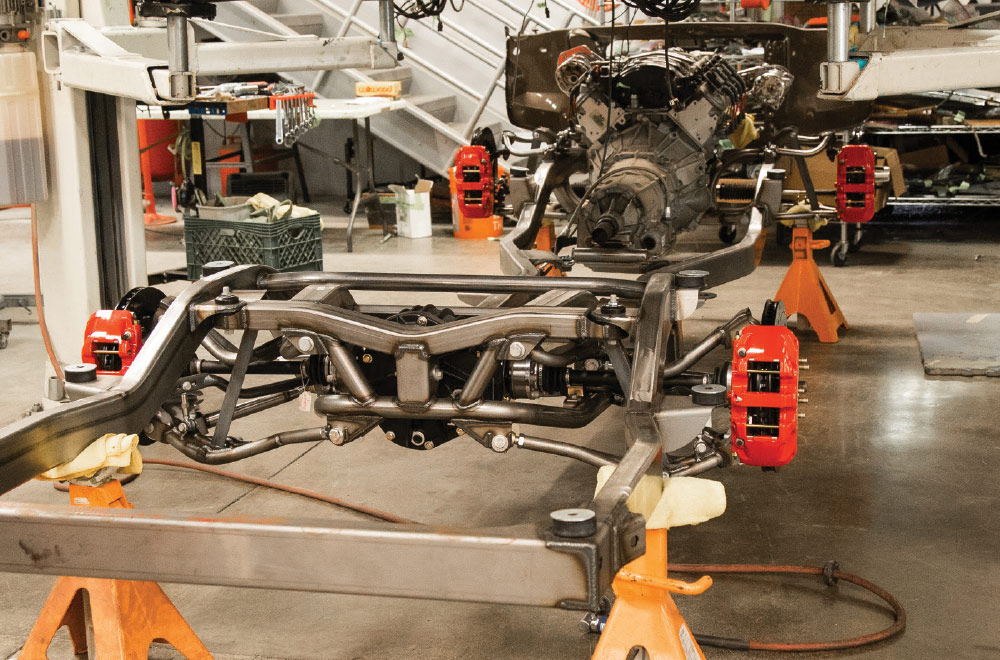
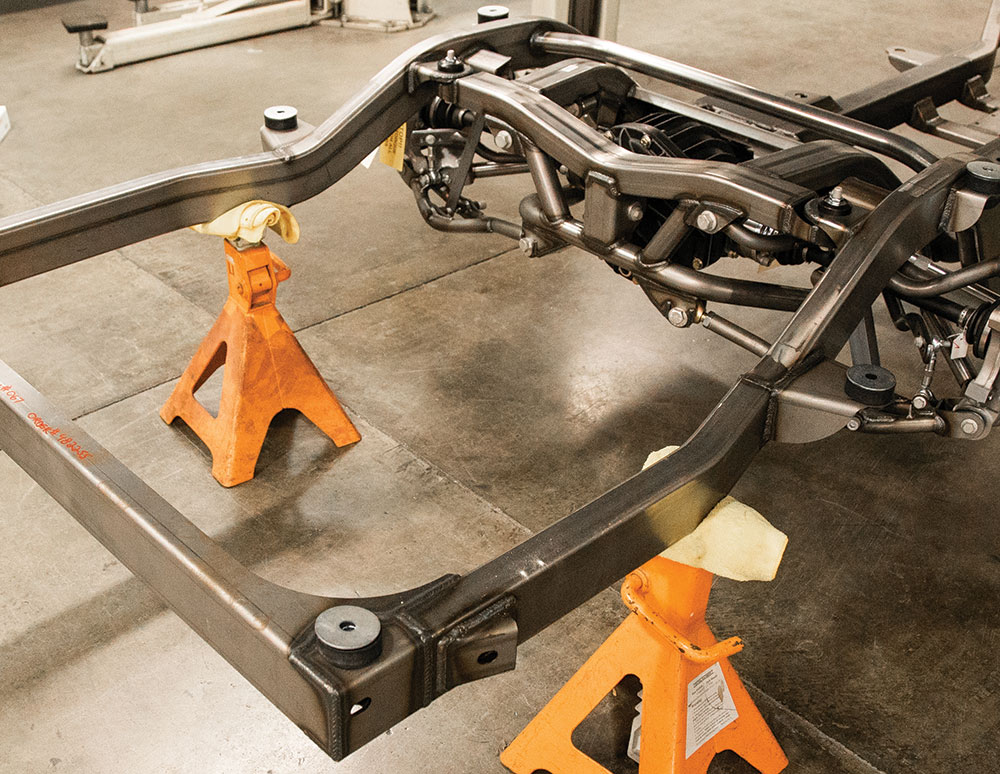
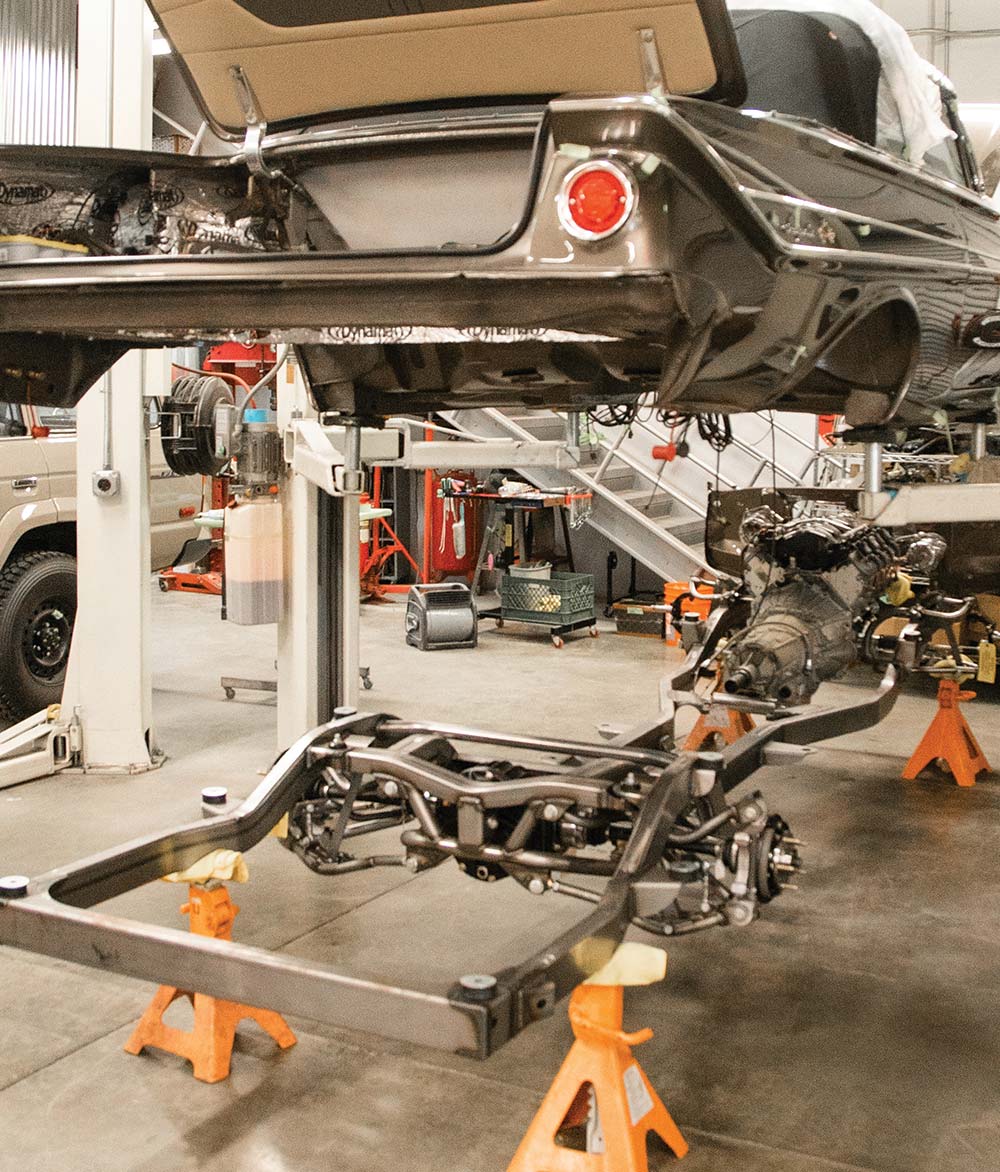

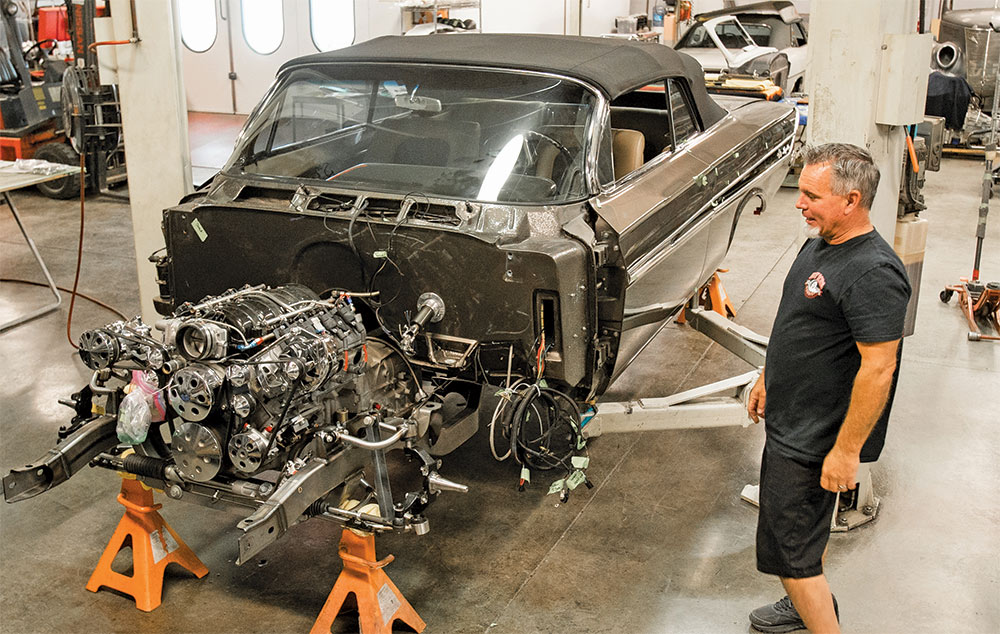
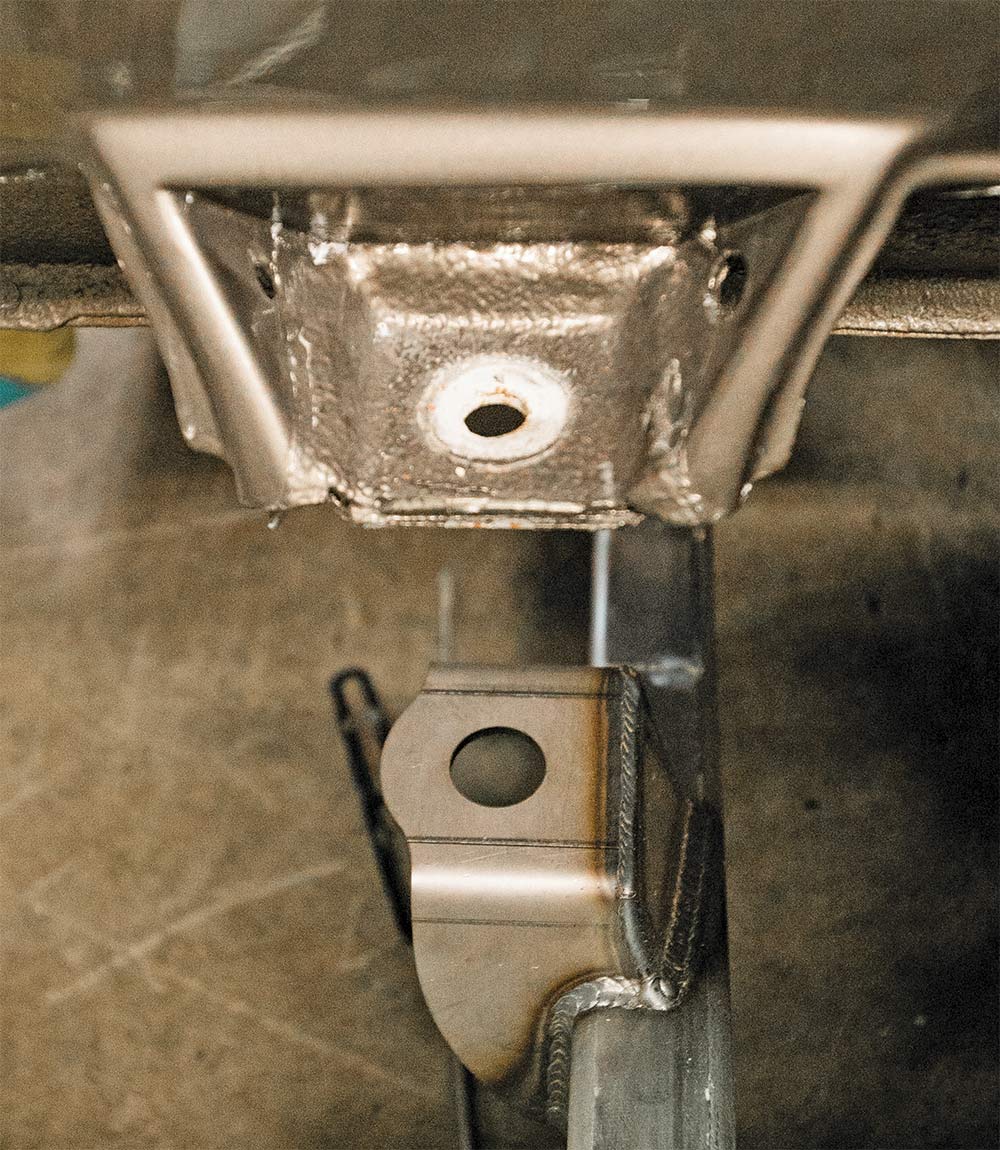

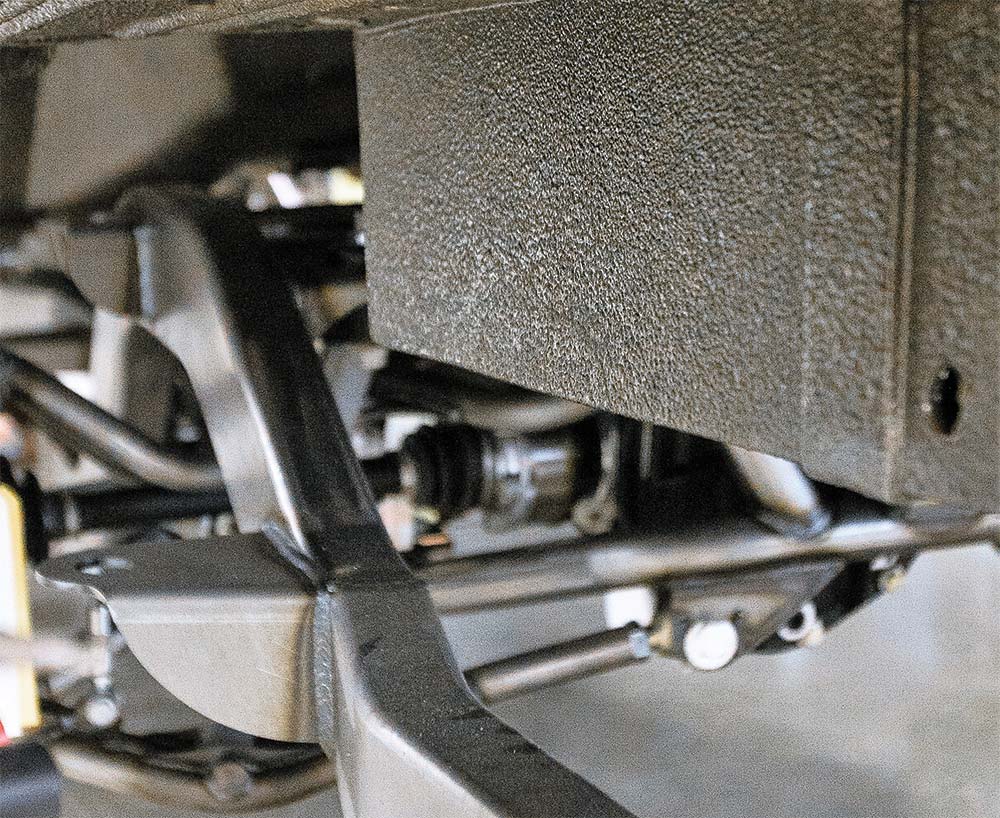

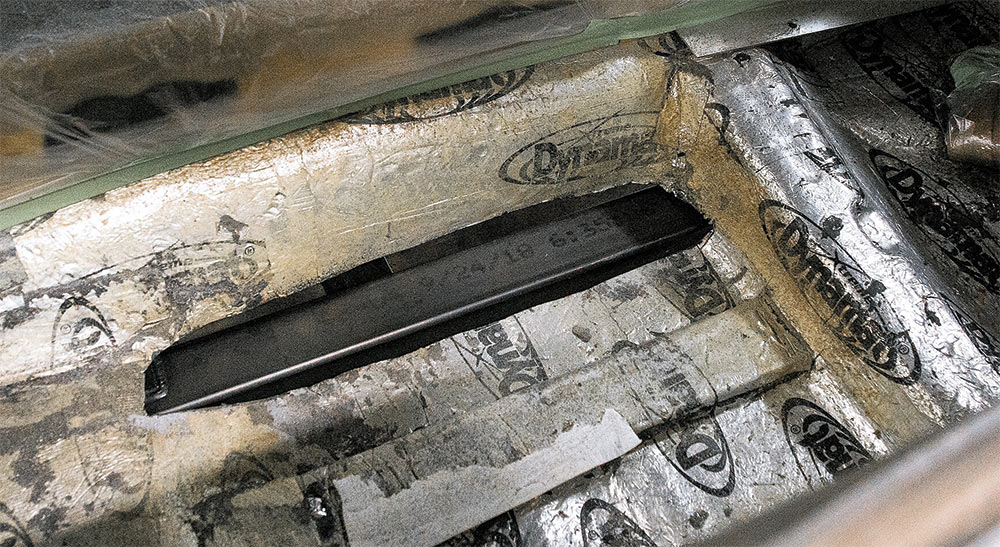
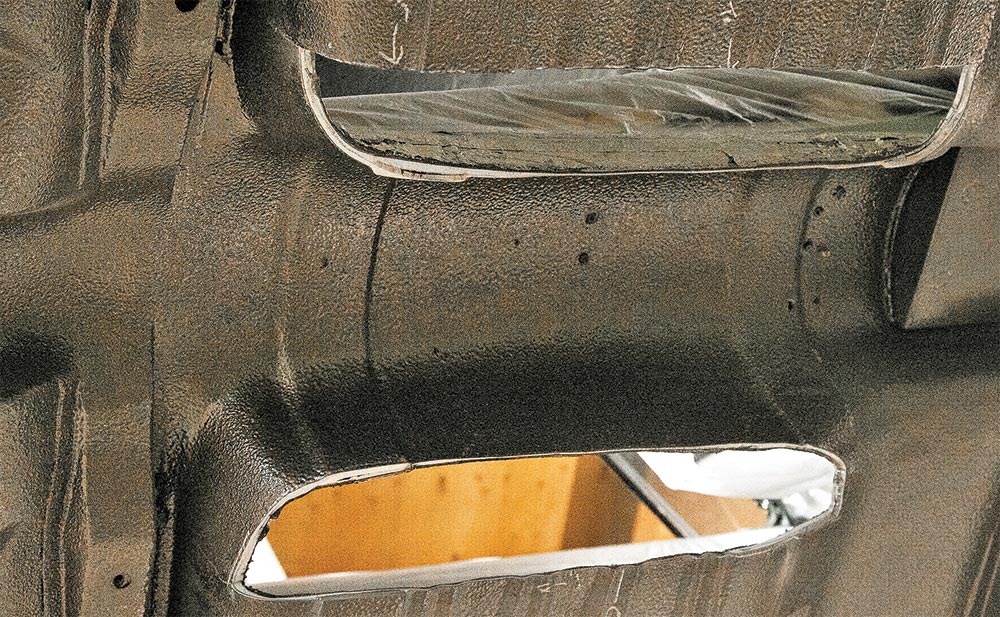

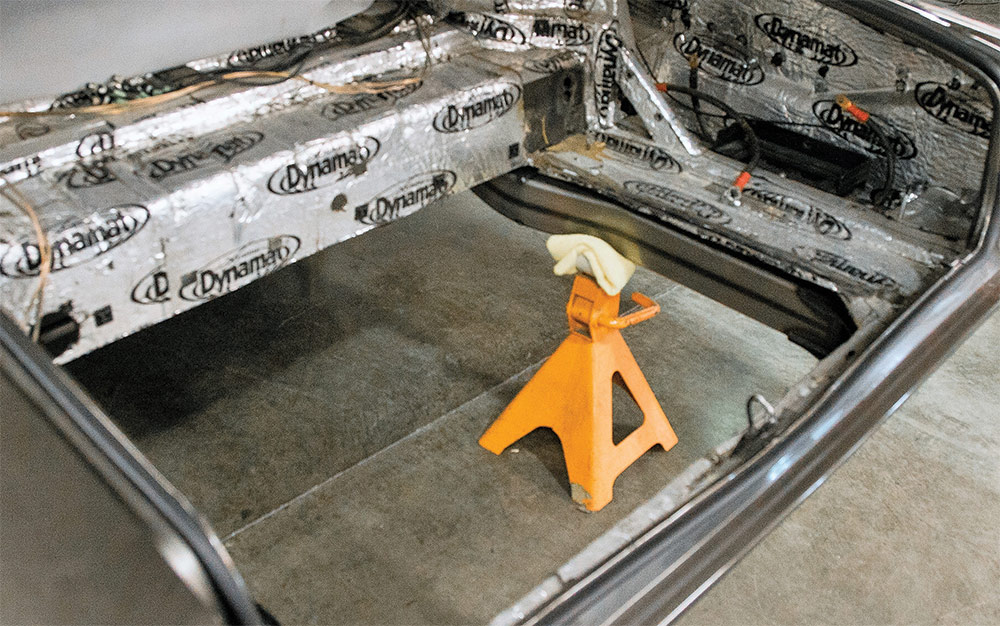
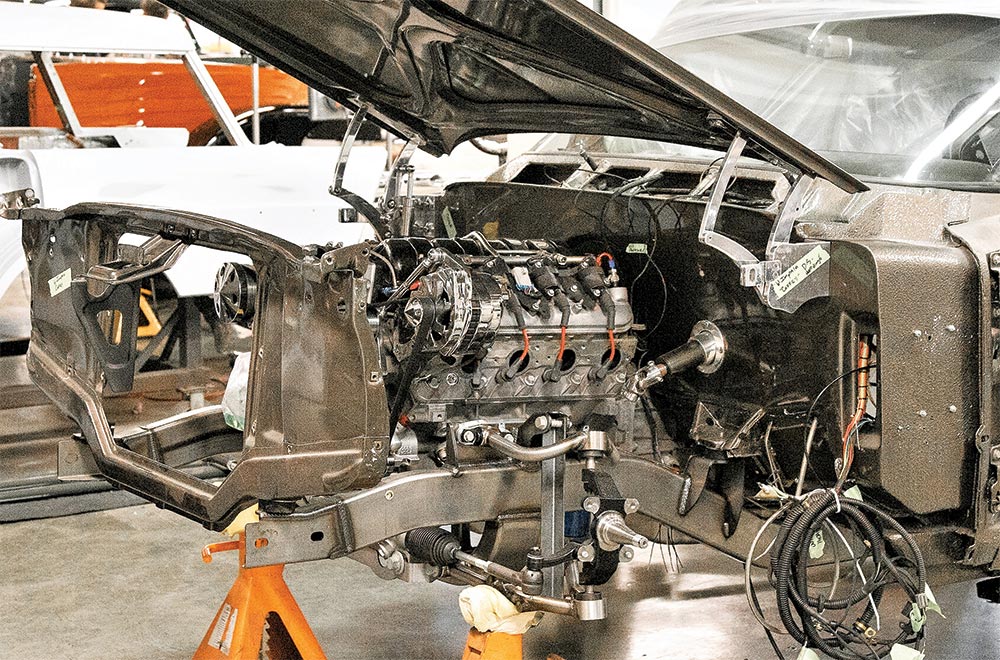


 SOURCES
SOURCESHot Rods & Hobbies
(562) 424-9425
www.hotrodsandhobbies.com